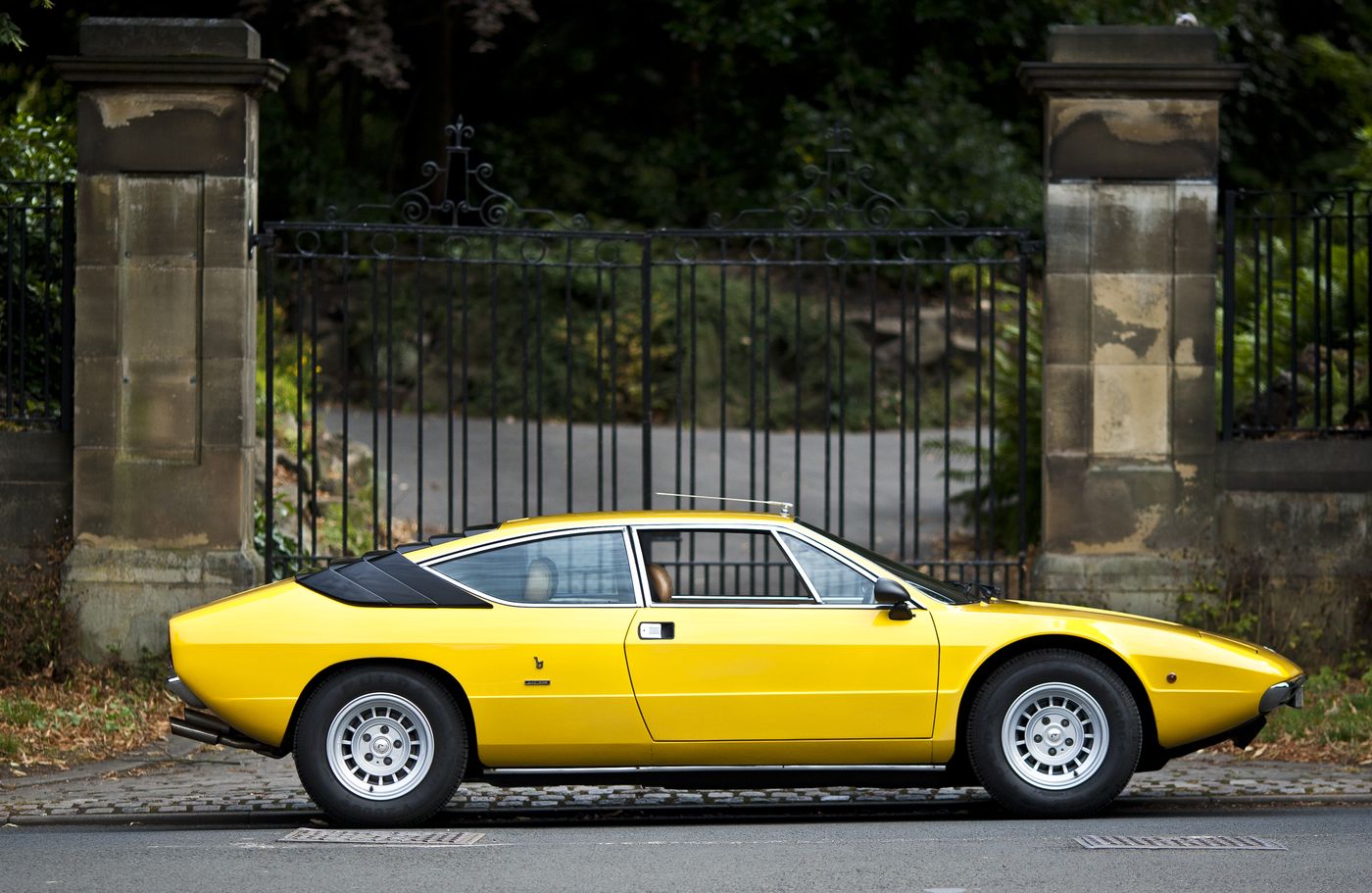50 Years of Lamborghini in 5 Minutes
60s – Lamborghini 400GT 2+2 (1966-1968)

After the success of the 350 GT, Lamborghini’s first production model, came the 400 series with 320hp. Its model name represents its V12 engine’s displacement, 4.0-liters, up from the 3.5-liters of its predecessor.
The 400 GT’s proportions were tweaked cleverly by coach builder Carrozzeria Touring to allow for rear seats, thus giving birth to the 400 GT 2+2, easily recognized by its paired headlights.
A new 5-speed syncromesh gearbox designed in-house, a revised independent suspension system, and elegant styling not seen again in Lamborghini’s design language in later years makes the 400 GT 2+2 a perfect example of what a Lamborghini in its infancy as a manufacturer.
70s – Lamborghini Urraco (1973-1979)

The 1970s were a bad time for Lamborghini financially as the company would eventually enter bankruptcy in 1978.
Pressing times meant the Italian manufacturer would have to begin building a different type of vehicle, something more practical, and with a smaller engine. Marcello Gandini, designer of the Miura, created the 2+2 wedged-shaped Urraco, which was powered by a series of single overhead cam V8 engines, the P200 with 180hp, the P250 with 217hp and the P300 with 247hp.
The driver ergonomics of the Urraco are generally noted to be poor, and the US market version, heavily de-tuned to 175hp to comply with emissions regulations, took over 10 seconds to hit 60mph.
Known as the “entry-level” Lambo, or “little bull,” the mid-engined Urraco is probably one of the least memorable Sant’Agata creations ever produced, reflected in its comparatively low market value.
80s – Lamborghini LM002 (1986-1993)

In the transitional period of receivership before the Swiss Mimran brothers took over the company in 1984, Lamborghini began working on a prototype 4WD military vehicle, codenamed “Cheetah.” Due to its complexity, it never caught on with its original target market, but did smoothly transition into the role of oversized toy for sheiks and celebrities.
The production model, LM002, was nicknamed the “Rambo Lambo,” an almost 7000lb. monster powered by a 5.2-liter, 450-hp V12 engine, similar to that used in the Countach.
Built on a tubular space frame chassis covered by a fiberglass and aluminum body, the LM002 could out-drag and out-brake cars one-third its weight, the latter thanks to massive 12-inch discs clamped down on by four-pot calipers.
90s – Lamborghini Diablo (1990-2006)

As posters of the Countach adorned the walls of Generation X, so thus did pinups of the Diablo for the following age cluster of car lovers, Generation Y.
The natural successor to the Countach and designed originally by the same man, Marcello Gandini (Chrysler tweaked Gandini’s initial design slightly for the production version), the original Diablo, launched in 1990, cost $239,000, had a 492-hp, 5.7-liter V12 and a top speed of 202mph.
Only available with a RWD drivetrain configuration at first, the Diablo VT in 1993 brought many upgrades to the original Diablo, the most important being an AWD system. An eclectic group of variants followed, including the SE30, SV, and VT Roadster.
In 1998 the Diablo was face lifted and continued in production until 2006, its V12 reaching a maximum displacement of 6.0-liters and 575hp as fitted to the Diablo GT.
2000s – Lamborghini Gallardo (2004-2014)

Volkswagen AG purchased Lamborghini in 1998, which became a part of the German automotive group’s Audi division. They followed up the Murciélago with a smaller, V10-powered sports car, the Lamborghini Gallardo, which has become the Italian company’s best-selling car ever with some roughly 14,000 units sold.
Available originally with a 5.0-liter, 500-hp V10, in a mid-engine, 4WD drivetrain configuration, and either a traditional manual gearbox or semi-automatic paddle-shift “E-Gear” transmission, the success of the Gallardo spawned countless numbers of special editions and variants.
The Gallardo continued to be built around an aluminum space frame chassis into its second generation, when it received an upgraded 5.2-liter V10, producing from 552hp up to 562hp in the LP570-4 models. A RWD drivetrain also became available with the introduction of the LP550-2 Valentino Balboni, and subsequent LP550-2 and LP560-2 spinoffs.
Top 5 Lamborghini Murciélago Special Editions
Top 5 Lamborghini Gallardo Special Editions
